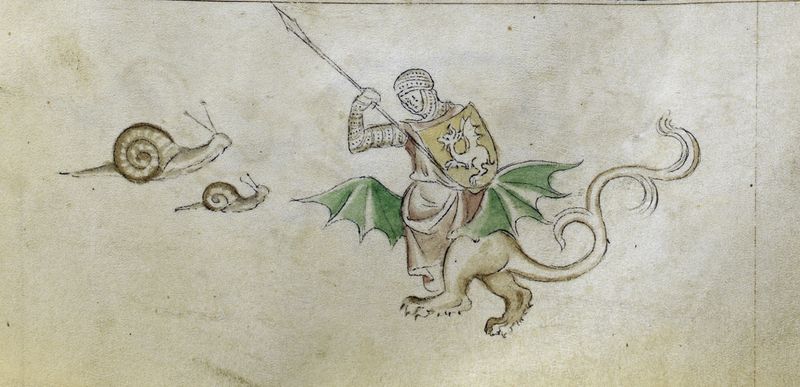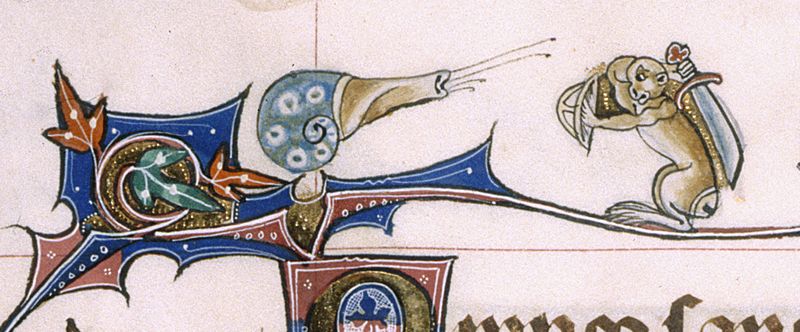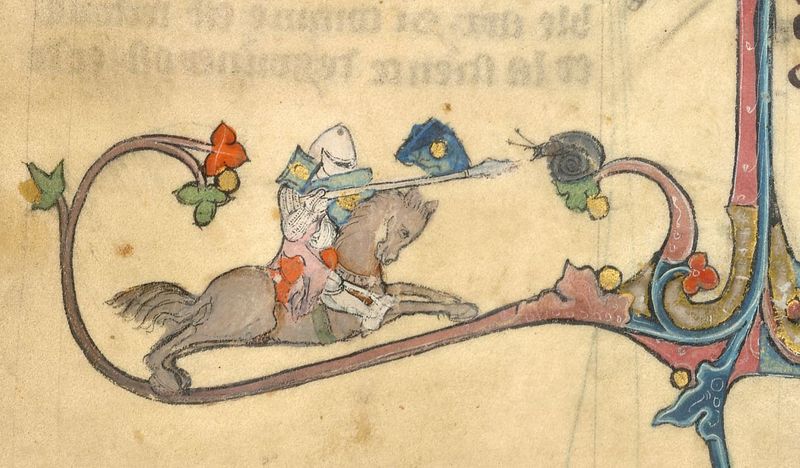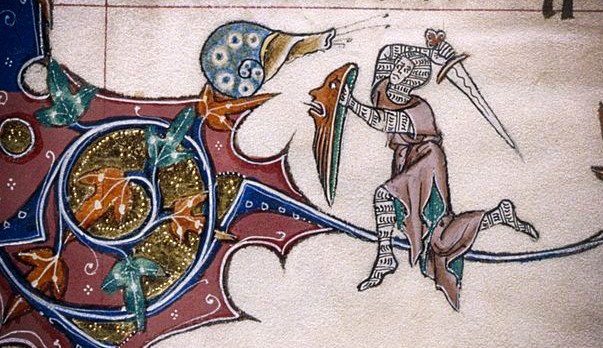It’s surprisingly common to find, on the margins of English manuscripts from the 13th and 14th centuries, a good amount of sketches, notes and doodles. Classical decorative motifs, with precise meanings known to all, belonging to either Christian or pre-Christian iconographic traditions, are also found all over these books. And occasionally, some weird stuff, the kind that keeps the specialists on tenterhooks, makes its way onto the stage. That’s the case with brave knights in shining armor… fighting snails.

The epic battle scene depicting a knight charging against a snail is surprisingly common in English medieval manuscripts. But the fact that it is so common does not mean that these scenes are not an also indecipherable. Nobody knows for sure what they mean.
The British Library points out that some scholars have suggested that the scene could represent, tangentially, the Resurrection of Christ; in 1850, the bibliophile Comte de Bastard claimed to have found, in an English manuscript, two of these miniatures surrounding an image of the scene in which Jesus revives Lazarus. Although unlikely, the snail image might indeed be related to life and death. The prominent art historian Lilian Randall says the snail is instead a representation of the Lombards, “a group vilified in the Middle Ages for its non-chivalrous behavior.” The contrast between the honorable knight and the snail would make the differences between Lombards and Bretons as evident and striking as possible.

But these brave snails could also be a marginal, quasi-codified commentary on social oppression (representing the confrontation between the poor and the aristocrats); a note on how snails, considered a pest that should be fought, were populating the herb gardens; a symbol of the baser passions; a contrast between the wisdom of nature (which endows its creatures with natural armor) and that of humans; or it could just be a cartoon, a single sample of medieval humor. After all, the scene of a mighty knight afraid to attack such an inoffensive opponent is kind of funny.

However, chances are it means something way more serious, such as the inevitability of death: the medievalist Lisa Spangenberg says that “the snail fighting the knight is a graphical representation of Psalm 58, on the Judgment of the wicked: ‘let them be like a snail which melts away as it goes, Like a stillborn child of a woman, that they may not see the sun.’”
More to read: Why are medieval manuscripts filled with raging, armed rabbits?
Image with grateful appreciation from the British Library Creative Commons

